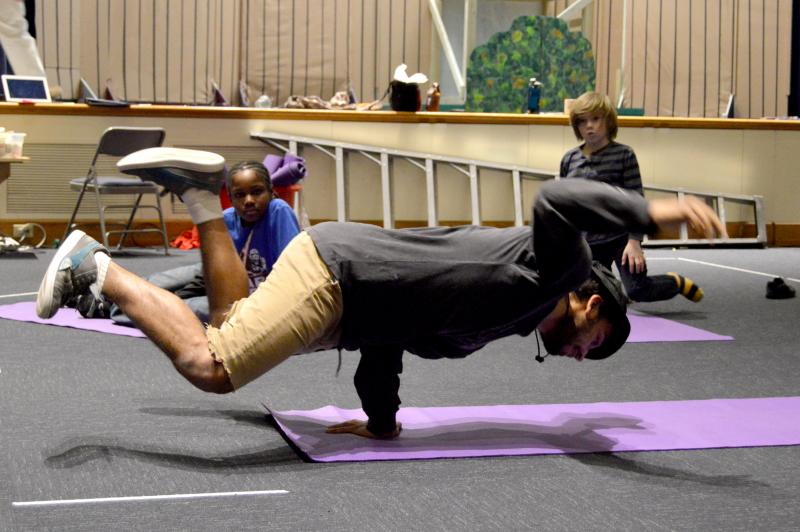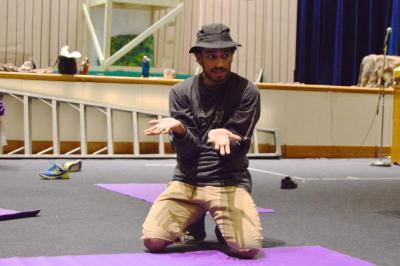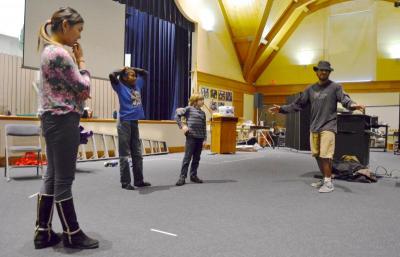Building an identity through breakdancing
Balancing on his head, Taylor Lomba can swing both of his legs through the air before locking his body into place like a statue – all while upside down.
Lomba, 22, a former student at Friends Academy and Dartmouth High School, has returned to Friends to teach breakdancing. The dance has become a passion of his for nearly a decade.
Breakdancing (also referred to as b-boying and breaking) got its start in the 1970s in New York City by African American and Puerto Rican youth. The dance, which has since caught on in popularity across the world, incorporates fast-paced, improvised moves.
There are four major categories of movement: toprock (movement in a standing position), downrock (footwork), freezes (such as handstands), and power moves (like back spins). The four types are mixed together fluidly.
“I started trying to break when I was at Friends Academy,” said Lomba. “I would go to school dances, and they would have dance circles. I’d try to break and pretend I knew what I was doing.”
He also remembers a disastrous talent show in which he nearly knocked himself out trying to do a spinning maneuver. After graduating from Friends, he became more serious about breaking, practicing at his sister’s dance studio in Tiverton, Rhode Island two or three times a week.
He soon became inspired by back spinning. During the move, Lomba’s body is rolled into a tight ball, feet in the air, spinning on his shoulder blades. He looked online to see how many other dancers could do back spins consecutively.
After posting a video in which he performed 52 spins, he sparked a competition between himself and another b-boy from Bulgaria. Lomba managed to bring his total up to 83 about a year later.
“It turned my forehead purple,” he said. “It pops the blood vessels in my skin. For a week, I was walking around with a purple face… but it was worth it.”
Even with access to his sister’s studio, he said that breaking is largely a self-taught practice. That’s because, he said, there’s such a heavy influence on discovering your own moves.
“Breaking is about learning a foundation, but also being original,” he said. “You gotta be original. It’s like we’re learning how to speak a language, and then you’re making up your own words to say what you gotta say.”
Breakdancing often happens in a circle (called a cypher), and that enables the group to dance in front of one another.
“It’s reminiscent of a Socratic seminar,” said Lomba. “You would basically be in a big circle and have a topic, and you’d have to bring a piece to that topic and say it in front of the whole room. Someone would take that and go somewhere else with it. [Breaking] is like a Socratic circle, but with dancing.”
In his weekly breakdancing classes at Friends Academy, Lomba encourages his participants, coaxing them to attempt new, creative moves. If a b-boy or b-girl wants to balance on one foot and dip down into a Kung Fu-inspired crane move, the student is praised for his or her creativity.
“It lets people redefine themselves. Imagine if you’re in the ghetto, and people are imposing an identity on you. When you start believing that, you lose a sense of yourself. What this dance does is reclaims that identity into your hands,” he said. “You’re meditating, in a sense, on what you are and where you are through dance. When you have a community doing that together, it becomes powerful.”















